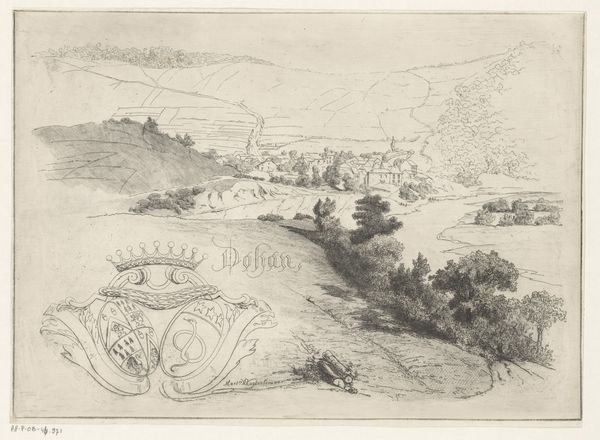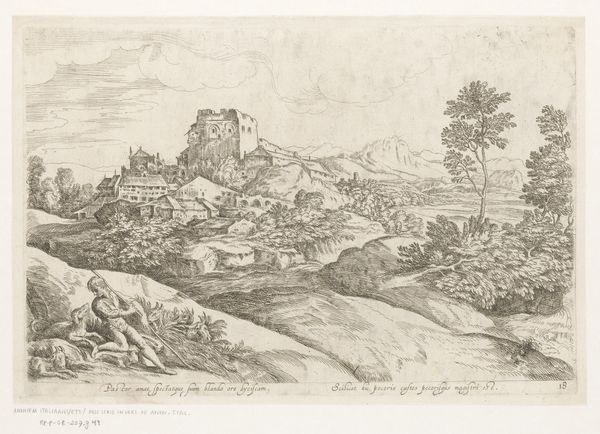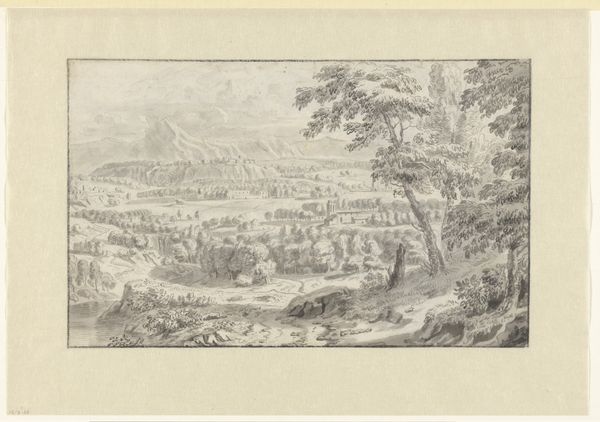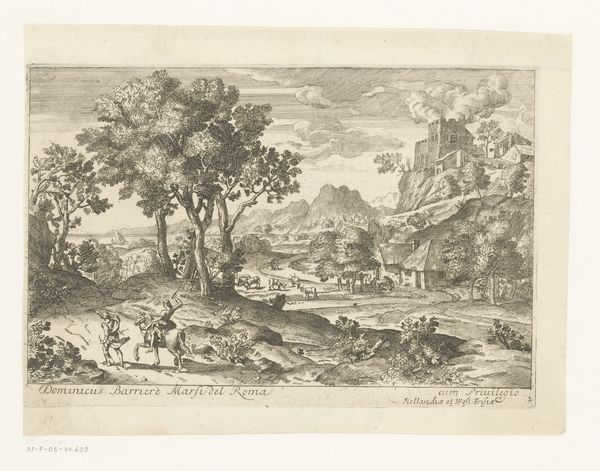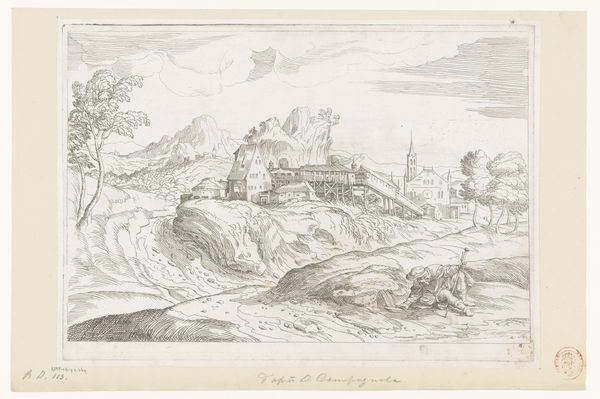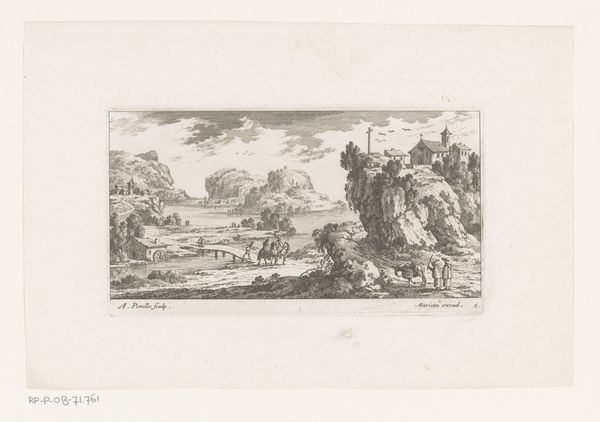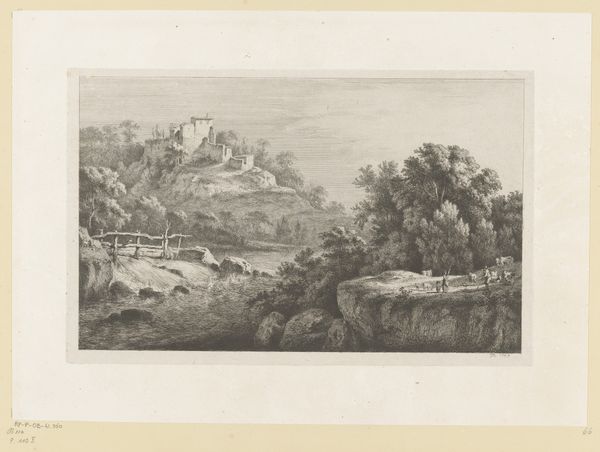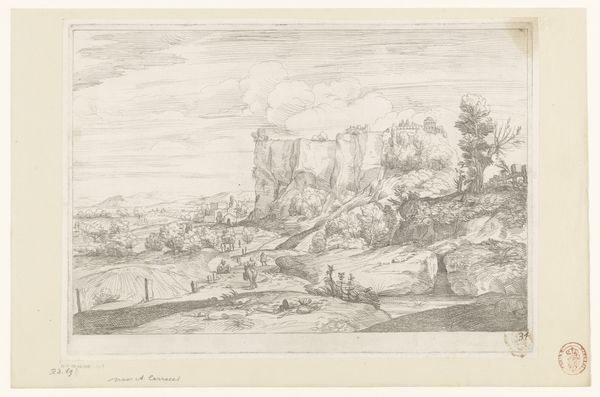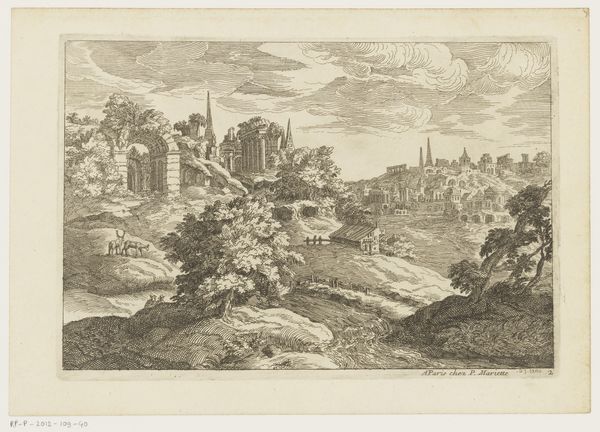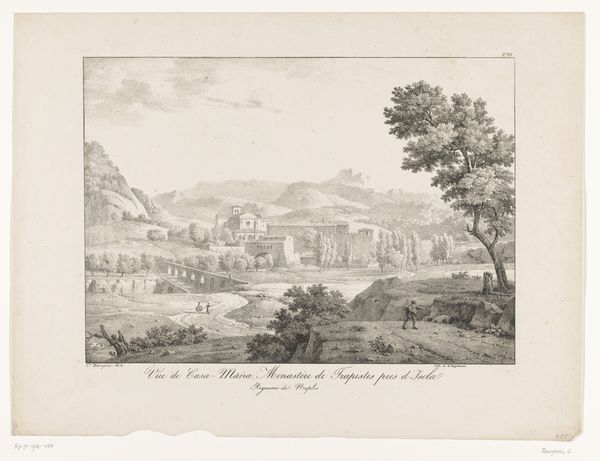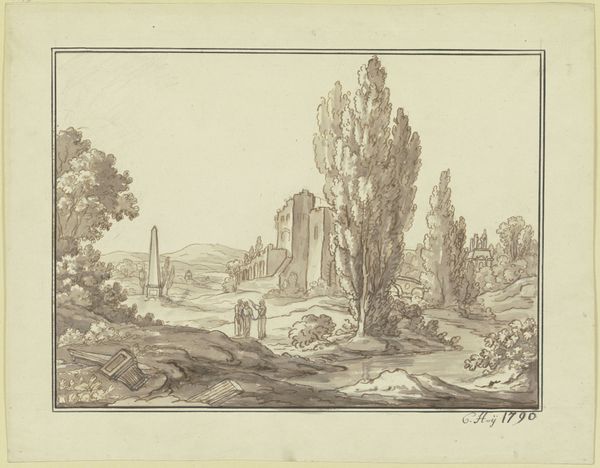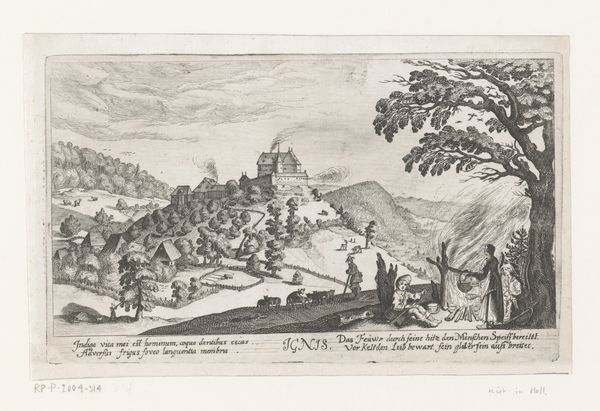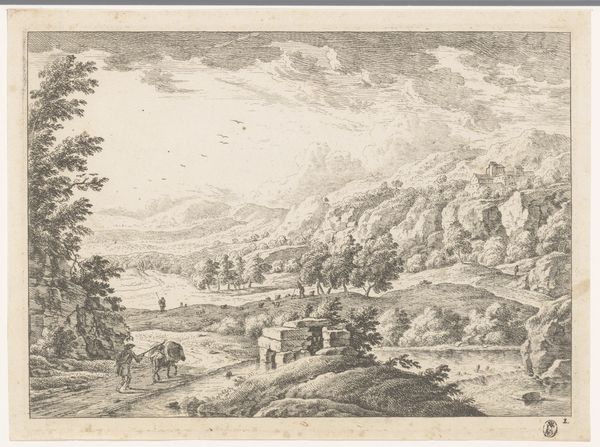
print, etching
#
baroque
# print
#
etching
#
landscape
#
etching
Dimensions: height 287 mm, width 404 mm
Copyright: Rijks Museum: Open Domain
Jean Pesne made this landscape with a castle during the 17th century using etching, a printmaking technique that democratized image production. The etching process involves coating a metal plate with a waxy, acid-resistant substance, through which the artist scratches an image. When the plate is bathed in acid, the exposed lines are eaten away, creating grooves that hold ink. This plate is then used to transfer the image onto paper, which is forced against it in a press. Notice the fineness of the lines, which give this image its delicacy. The controlled process of etching allowed Pesne to capture intricate details, from the feathery foliage to the imposing architecture. Etchings like this one met a rising demand for images as Europe's urban centers developed, playing a vital role in disseminating art to a wider public. By mastering this easily reproducible medium, artists like Pesne were at the forefront of a visual revolution, changing how art was circulated and consumed.
Comments
No comments
Be the first to comment and join the conversation on the ultimate creative platform.

